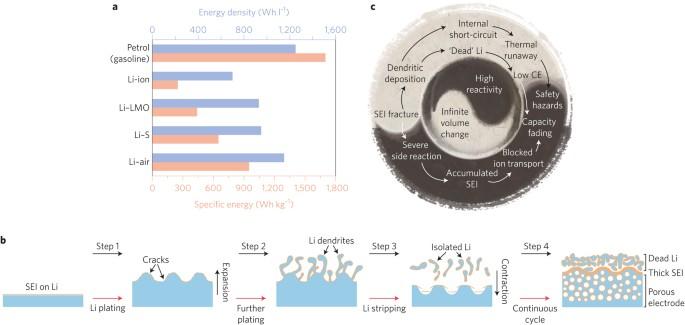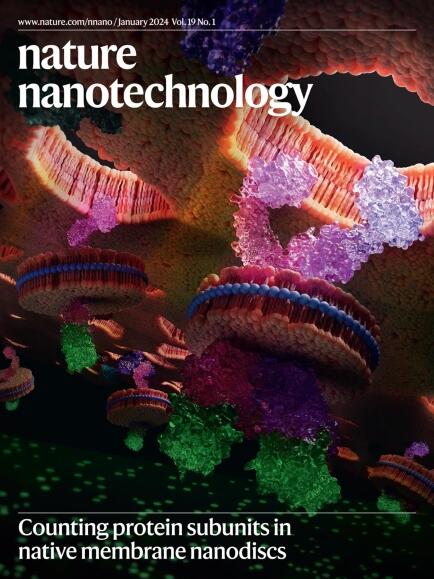Reviving the lithium metal anode for high-energy batteries
IF 34.9
1区 材料科学
Q1 MATERIALS SCIENCE, MULTIDISCIPLINARY
引用次数: 3945
Abstract
Lithium-ion batteries have had a profound impact on our daily life, but inherent limitations make it difficult for Li-ion chemistries to meet the growing demands for portable electronics, electric vehicles and grid-scale energy storage. Therefore, chemistries beyond Li-ion are currently being investigated and need to be made viable for commercial applications. The use of metallic Li is one of the most favoured choices for next-generation Li batteries, especially Li–S and Li–air systems. After falling into oblivion for several decades because of safety concerns, metallic Li is now ready for a revival, thanks to the development of investigative tools and nanotechnology-based solutions. In this Review, we first summarize the current understanding on Li anodes, then highlight the recent key progress in materials design and advanced characterization techniques, and finally discuss the opportunities and possible directions for future development of Li anodes in applications.

振兴高能电池的锂金属阳极
锂离子电池对我们的日常生活产生了深远的影响,但由于其固有的局限性,锂离子化学物质很难满足便携式电子产品、电动汽车和电网储能日益增长的需求。因此,目前正在研究锂离子以外的化学物质,并需要使其在商业应用中具有可行性。使用金属锂是下一代锂电池,尤其是锂-S 和锂-空气系统最受欢迎的选择之一。由于安全问题,金属锂已经被遗忘了几十年,现在,由于研究工具和基于纳米技术的解决方案的发展,金属锂已经做好了复兴的准备。在本综述中,我们首先总结了目前对锂阳极的认识,然后重点介绍了最近在材料设计和先进表征技术方面取得的主要进展,最后讨论了锂阳极在未来应用中的发展机遇和可能方向。
本文章由计算机程序翻译,如有差异,请以英文原文为准。
求助全文
约1分钟内获得全文
求助全文
来源期刊

Nature nanotechnology
工程技术-材料科学:综合
CiteScore
59.70
自引率
0.80%
发文量
196
审稿时长
4-8 weeks
期刊介绍:
Nature Nanotechnology is a prestigious journal that publishes high-quality papers in various areas of nanoscience and nanotechnology. The journal focuses on the design, characterization, and production of structures, devices, and systems that manipulate and control materials at atomic, molecular, and macromolecular scales. It encompasses both bottom-up and top-down approaches, as well as their combinations.
Furthermore, Nature Nanotechnology fosters the exchange of ideas among researchers from diverse disciplines such as chemistry, physics, material science, biomedical research, engineering, and more. It promotes collaboration at the forefront of this multidisciplinary field. The journal covers a wide range of topics, from fundamental research in physics, chemistry, and biology, including computational work and simulations, to the development of innovative devices and technologies for various industrial sectors such as information technology, medicine, manufacturing, high-performance materials, energy, and environmental technologies. It includes coverage of organic, inorganic, and hybrid materials.
 求助内容:
求助内容: 应助结果提醒方式:
应助结果提醒方式:


